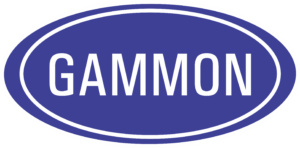This GamGram was originally published as No. 13 but its position has been exchanged with No. 25 because various revisions over the years have made it more of an interpretive discussion of the color rating technique. It would be a good idea to re-read the 1996 version of No. 13 before reading this article. First of all, let’s review the methods:
- Color method – This is a field method using system pressure to force a measured volume of fuel through a test membrane. You then rate the color of the membrane, when dry, using the ASTM color booklet. “O” is beautiful; 10 is horrible. Use ASTM Method D2276 Appendix X1.
- Matched weight method – Two factory-matched membranes are placed together, one on top of the other and a measured volume of fuel (in the field) then flows through both. The laboratory then weighs each membrane, subtracts the weight of the lower one from the top one and reports the amount of dirt that was collected on the top one. This method has the advantage of avoiding pre-weighing, coding and record-keeping before testing. Use ASTM Method D-2276.
Both of these methods have the advantage over a laboratory test of a sample collected in a can or bottle, in that the sample passes through the membranes directly from the flowing pipe that carries the fuel. The advantage we are referring to, of course, is that errors caused by unclean sample containers are totally eliminated. If it is not convenient to use the above methods, your last resort is to use ASTM Method D5452, which describes how to collect samples in shipping containers and perform gravimetric tests in the laboratory. This procedure, which was recently revised, recommends that the sample be taken from a flowing pipe and it recommends the matched-weight technique.
An argument against the color rating method is that the color of the fuel itself can stain the membrane, leading you to think the color is dirt. We have heard of jet fuel made from North Slope crude oil that will color a membrane to a B6 with no weight at all. It is rather obvious that a test is needed that will tell you whether it is dirt or color in the fuel. One easy way is to look at the back of the membrane and compare the color of the front to the reverse side. The difference in color is a measure of the filterable dirt in the fuel sample. It really astonishes us why this old, but simple technique has not been used except by a few people.
A refinement of this procedure is to put 2 membranes in the plastic monitor and then compare the topside colors of both. We like this much better, not only because you may disturb the collected dirt on the top when you turn it over on a color chart, but because color on top can show through to the underside of the membrane. Note: Do not use matched-weight refill membranes for this test because they cost four times more than standard membranes.
If we accept the fact that the above techniques are logical, the big problem now is how to decide how many numbers difference in rating between the top membrane and the lower one is acceptable. To our knowledge, no laboratory has published the results of any research on this, but we surely hope they get started.
One of our oil company customers has the following procedure for delivery of fuel to the aircraft:
He uses ASTM Method D-2276 as the test method, collecting 10 liters:
-
- If a single membrane shows a 3 or higher reading (rated wet), run a second test with a double membrane.
- If the difference is more than 2 numbers, do not use the fuel until a gravimetric test has been completed.
- If the top membrane is rated 6 or darker, the fuel must be tested gravimetrically before use, regardless of the color of the lower membrane.
We would modify this procedure by rating the membranes when dry and by specifying that a gravimetric test be performed if the color difference is as great as 2 numbers. In this way, you learn the weight significance of a 2 number color difference for that fuel. Once you know this, we feel the above plan can be used with confidence.
Do not forget that the color rating technique serves its greatest purpose as a way to detect a change. That is why tests must be performed on a regular schedule with absolutely no variation in procedure. We do not propose to go through a step-by-step procedure because you can easily get this from other sources such as our MiniMonitor instruction booklet. However, there are a few special points that bother us:
- The Sampling Point — Read GamGram No. 6 and Bulletin No. 3. Why do some people expect to obtain accurate results from a sampling connection that generates rust and debris? Don’t laugh! This is one of the worst problems. We often find rusty gate valves with graphite stem packings in a sampling connection where all other components are stainless steel.
- Technique
- Do not over-tighten the monitor holder. There is no need to apply great force. O-rings do the sealing. If you have leaks, order new o-rings. Over-tightening can cause membrane breakage around the clamped edge.
- Never move a valve or start and stop a pump while a test is in progress. If you must do these things, you must first stop flow through the membrane with the Flush/Test valve. Then after system flow has been re-established, continue the test by opening the Flush/Test valve.
- Never turn a flushing valve rapidly. How many times have you found a broken membrane? We believe that this is caused by rapidly starting the flush cycle in a high pressure system. The fuel bypasses the membrane, but it can enter the plastic monitor from the outlet side, compressing the trapped air in the monitor. A membrane has little strength and fails from this slight reverse flow. Turn the flushing valve very slowly.
- Another cause of broken membranes is the double-acting syringe that a competitor supplies with his test kit. Sometimes the internal check valves stick, allowing fuel to be forced backward through the membrane when you push the handle inward. To avoid this, remove the plastic monitor before you push in the handle.

